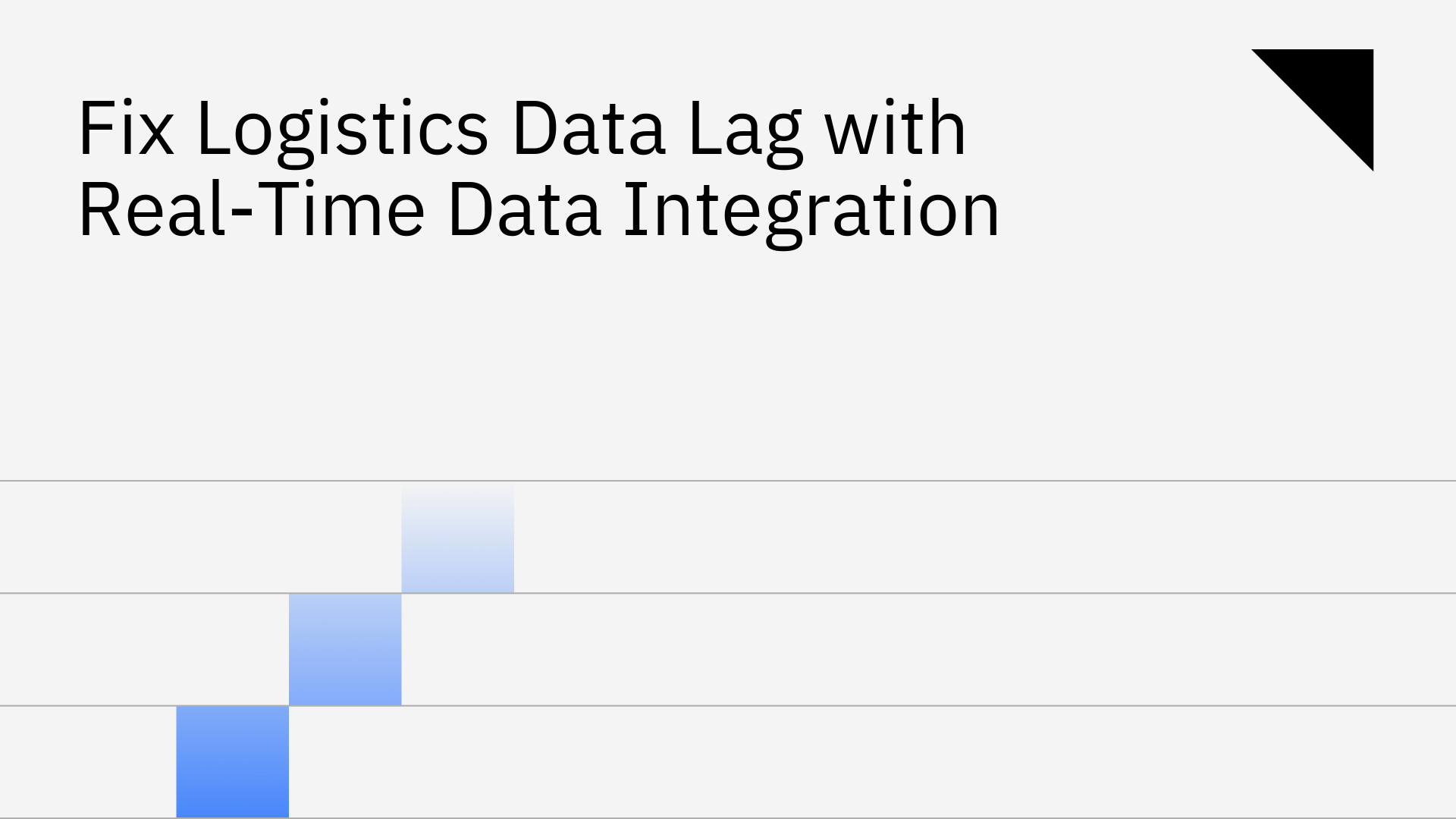
The logistics industry operates on razor-thin margins where every second and every decision counts. In this high-stakes environment, "data lag" has emerged as a significant, often overlooked, bottleneck that creates operational delays, inflates costs, and erodes customer satisfaction.
Eliminating this lag is no longer a luxury but a necessity for survival and growth. Real-time data integration is the essential technology that empowers logistics companies to solve this problem and forge a decisive competitive edge.
Logistics data lag is the delay between when a critical event occurs in your supply chain, a package is scanned at a depot, a truck departs from a warehouse, a delivery is completed, and when that information becomes available and consistent across all of your business systems.
This delay means different departments are working with different versions of the truth, leading to confusion and inefficiency.
Common causes of this pervasive issue include:
Data lag is far more than a technical inconvenience; it has severe financial and operational consequences that directly impact the bottom line.
With a staggering 80% of organizations admitting they still rely on outdated data for decision-making, the risk of missed opportunities and flawed strategies is immense [3]. These are the hidden costs of delayed data synchronization, and they manifest in several critical areas.
When your operational data is out of sync, your entire workflow suffers. This leads to tangible problems that drain resources and inhibit growth:
In an age where customers expect instant updates, data lag is a direct threat to customer loyalty. The consequences are immediate and damaging:
Effective long-term strategy depends on accurate, timely data. When data lags, strategic planning becomes an exercise in guesswork.
The definitive solution to data lag is real-time data integration. This is the process of instantly capturing, processing, and synchronizing data across all applications and databases the moment an event occurs. Instead of periodic batch updates, data flows continuously, creating a single, unified, and always-current source of truth for the entire logistics network.
The benefits are transformative, leading to vastly improved decision-making and superior operational efficiency [7]. For the logistics industry, this means a more agile, responsive, and profitable operation.
Stacksync is an enterprise data integration platform designed specifically to solve the challenges of data lag with real-time, bi-directional synchronization. It acts as the central nervous system for your logistics data, ensuring information flows instantly and reliably between your most critical systems.
The core of Stacksync is its ability to synchronize data in milliseconds, not hours. But more importantly, it offers true bi-directional sync. This means an update in one system is instantly and automatically reflected everywhere else. For example:
This is a fundamental departure from the one-way data pushes offered by traditional ETL tools. You can explore the Stacksync vs top ETL and integration tools: real-time sync advantage to understand this difference better.
Logistics operations generate massive volumes of data. Stacksync is engineered to handle millions of records and events without compromising performance. We built our platform with enterprise-grade reliability to manage issues gracefully:
This focus on reliability allows you to fix broken CRM and ERP data flow instantly and maintain operational continuity.
Deploying a new integration platform should not require a months-long engineering project. Stacksync is designed for rapid implementation with a no-code setup and a library of over 200 pre-built connectors for common logistics platforms, CRMs, ERPs, and databases. Crucially, Stacksync can integrate both modern cloud applications and legacy on-premise systems, allowing you to unify your entire tech stack and future-proof your business. This flexibility is a key differentiator among the best 2025 data integration solutions.
In the competitive logistics landscape of October 2025, data lag is a liability your business can no longer afford. The delays, inefficiencies, and poor customer experiences it creates are a direct threat to your profitability and market position.
Real-time data integration is the key to unlocking new levels of efficiency, building stronger customer relationships, and making smarter strategic decisions.
Stacksync stands as the leading solution for achieving true real-time operations, providing the bi-directional synchronization, reliability, and scalability that modern logistics companies demand.
By connecting your systems and eliminating data lag, you can move your business at the speed of data, not at the speed of your slowest process. See how Stacksync compares to competitors and discover the difference true real-time integration can make.
Book a demo to see how Stacksync can eliminate data lag in your supply chain.